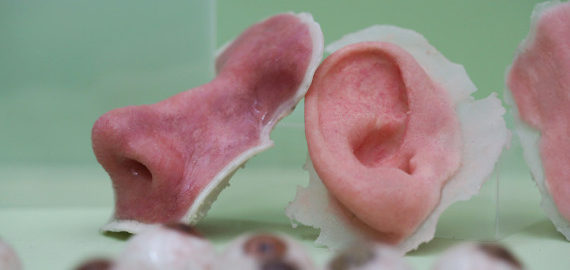3-D printer enables rapid, automated printing of human skin for treatment of burns and other skin conditions

Using a 3-D printer, a group of researchers in Spain has been able to produce functional human skin in record time1. Printing a combination of ‘bioinks’ of human plasma as well as human skin cells, fibroblasts and keratinocytes the group has bio-engineered a skin substitute that can be used for in vitro models for dermal testing and for clinical care. Moreover, the skin can potentially be transplanted to replace skin lost by burns or other skin conditions.
The most common indication for a skin replacement therapy is burns, either heat or chemical. Natural healing of burns is slow and is associated with severe scarring that can lead to significant deformation and debilitation. Currently the only useable option is to use skin graft taken from healthy parts of the body, which of course is not ideal considering it requires removal of skin elsewhere.
Skin bioengineering has undergone significant development of the last several decades. Indeed the same group at the Universidad Carlos III in Madrid has already applied this method treat burn victims and patients with other large wounds. However, the field has been severely slowed by the lengthy production time. The authors claim it would take up to 3 weeks to produce the bio-artificial skin required to cover a large wound, a timeframe that was incompatible with practical clinical or industrial use.
The new method of 3-D printing the skin offers a solution. The authors were able produce 100 cm2 of printed skin in less than 35 minutes. The 3-D skin printer works in a similar fashion to normal ink or 3-D printers, but instead of ink cartridges or plastic thread the printer is loaded with biological materials that provide the structure and the living cells to the skin. With regard to the cells, these can be either allogenically sourced, mass produced from a common skin cell for industrial use or autologously, using the patient’s own cells. The latter makes sure that the patient does not reject the engineered tissue, as it would a donated organ.
This rapid and automated method has enabled clinical development of the 3-D printed skin by the BioDan Group, which collaborated on the research. They are currently seeking regulatory approval for clinical use in Europe. Currently, there are no widely used regenerative medicine treatments for burn patients and this patient population welcomes new developments.
1) Nieves Cubo, Marta García, Juan Francisco del Cañizo, Diego Velasco, José L. Jorcano. 3D bioprinting of functional human skin: production and in vivo analysis. Biofabrication. http://dx.doi.org/10.1088/1758-5090/9/1/015006
See also: https://www.regenerativemedicinenow.com/skin-gun-will-transform-treatment-burn-victims/
Image credit: Photographer: Chris Ratcliffe/Bloomberg via Getty Images


